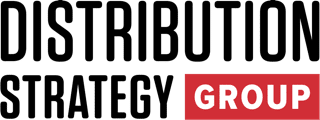Most distributor sales teams have the data they need to grow faster but aren’t using it.
When leadership sets new revenue targets, the default response is to push reps to do more: make more calls, send more emails and schedule more meetings. But this doesn’t always translate to closing more deals.
Too often, reps are left to rely on instinct instead of hard data, focusing on what feels effective rather than what’s proven to work. Without the right visibility, there’s no way to know which of those efforts is driving revenue. As a result, reps spend precious selling time on strategies that don’t actually work.
Growth shouldn’t be a guessing game, but that’s exactly what happens when teams lack insights into what’s working and what’s not. This uncertainty — what we call revenue fog — makes it difficult to scale success, eliminate inefficiencies and create predictable growth.
But revenue fog doesn’t have to last forever. The right data and technology give distributors the clarity they need to make smarter decisions, drive more sales and build a repeatable path to growth.
Root Causes of Revenue Fog
Revenue fog doesn’t appear out of nowhere; it’s the result of hidden inefficiencies and limited visibility that build up over time. Here are the main factors contributing to revenue fog for distributors:
- Data silos: When sales reps use multiple systems or manual processes — or worse, don’t track activities at all — it’s impossible to see what’s working. Some reps log activity in a CRM, while others use spreadsheets, email trails or even Post-it notes. This scattered tracking buries helpful insights, making them hard to find and use. A centralized system makes it easier to see what’s working, share best practices across the team and train new reps faster.
- Undefined sales processes: Without a standardized sales process, reps end up taking different approaches. One may prioritize upselling, another focuses on relationship-building, and a third takes a purely reactive approach. With everyone working differently, it’s hard to compare results, let alone identify which strategies are most effective.
- Disconnect between activities and transactions: Even when companies track sales activity, they often don’t connect it back to actual transaction data. Closing the loop between sales efforts and revenue outcomes is essential for understanding what drives your success. Distributors need this link to measure which actions lead to closed deals.
Why Revenue Fog Should Matter to Your Business
Revenue fog makes growth unpredictable. Instead of doubling down on what works, teams waste time on activities that don’t move the needle.
This lack of clarity often frustrates sales reps. Without data to guide them, they have to rely on gut instinct. Leadership faces the same challenge: Without knowing which sales activities are driving revenue, they can’t set realistic goals, coach effectively or hold teams accountable.
This leads to missed opportunities, wasted resources and stalled growth.
Tracking conversion rates, customer interactions and sales activities is the key to cutting through revenue fog. This highlights high-impact actions like conversations, follow-ups and strategies that close deals. Cutting through revenue fog helps teams work more efficiently, enables leadership to make smarter decisions and shifts the sales strategy from a guessing game to a data-backed plan for predictable, repeatable growth.
Fight the Fog with Technology and Data
Getting rid of revenue fog starts with better data and smarter technology.
Distributors need a centralized system to track sales activities where all data becomes a single source of truth. When teams rely on fragmented systems — or none at all — it’s impossible to get a clear view of what drives revenue. But when everything lives in one system, leadership gets a clear view of what drives revenue and where there’s room to improve.
Centralizing data is just the first step. The real power comes from connecting sales activities to outcomes. AI-powered sales tools can track which actions (like follow-ups, upselling or addressing wallet share gaps) lead to closed deals. With this insight, leadership can create a playbook that helps every rep, even new hires, follow proven strategies that drive revenue.
When you can see what’s working, you can do more of it and stop wasting time on what doesn’t. For example, we worked with a distributor who saw their open quote conversion rates jump by 60% just by making sure reps followed up on every outstanding quote. This discovery was only possible with clear visibility into their sales process.
Clearing Revenue Fog
Revenue fog slows growth, creates inefficiencies and makes it harder to scale. Without clear visibility into what drives sales, distributors risk wasting time on the wrong strategies while missing opportunities that could move the needle.
But it doesn’t have to be this way. Distributors can replace guesswork with real insights. Leadership can make smarter decisions, sales teams can focus on what works, and the business can grow without relying on trial and error.
Benj Cohen founded Proton.ai, an AI-powered CRM for distributors. His company’s mission is to help distributors harness cutting-edge artificial intelligence (AI) to drive increased sales. Benj learned about distribution firsthand at Benco Dental, a family business started by his great grandfather. He graduated Harvard University with a degree in Applied Math, and speaks regularly at industry events on the benefits of AI for distributors. Benj has been featured in trade publications including MDM, Industrial Distribution, and Industrial Supply Magazine. His company, Proton.ai, announced a $20 million Series A round of funding in 2022, led by Felicis Ventures. In 2023, Benj was recognized in Forbes 30 Under 30 – the first leader in distribution to receive such recognition.


